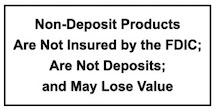Why I Decided to Switch Banks
When I moved to Overland Park, I chose my bank completely out of convenience. Back in the day, that meant choosing a bank close to home or work. But today, with mobile banking, digital transactions, and cybersecurity advancements, convenience isn’t about location anymore—it’s about accessibility. And let’s be real, every bank has an app now.
That realization made me stop and think: If I can bank anywhere, what do I actually want from my financial institution? The answer was simple—a real relationship. I didn’t just want a place to park my money. I wanted a banking partner, people who knew my name, and a team I could trust. I had a great relationship with my financial advisor, so why should my bank be any different?
Yet, I hesitated. I dreaded the hassle of switching. Would it be a logistical nightmare? Would I regret it halfway through? Was it even worth the effort? The inertia kept me stuck with a big, impersonal bank for far too long. But eventually, I hit my tipping point. It was time for a change. And that’s when I chose Cornerstone Bank.
The Transition Process: How I Switched Banks
Once I committed, I realized the process wasn’t nearly as bad as I had built it up to be in my head. Here’s how I tackled it:
✅ Set Aside Time: I blocked off 2-3 hours, grabbed some coffee, and got to work.
✅ Reviewed My Statements: I printed the last three months of bank and credit card statements.
✅ Identified Automatic Payments: I highlighted everything from utilities to mortgage payments.
✅ Updated Payment Details: I logged into each service and switched my bank info to Cornerstone.
✅ Updated Digital Wallets & Apps: I switched my bank info on Venmo, PayPal, QuikTrip, and Apple Pay.
✅ Synced with Financial Software: I added my new account to QuickBooks and Quicken.
I was shocked—in just 2-3 concentrated hours, I had 80% of the switch done! Digital banking actually made things easier than I expected.
Over the next few months, I monitored my old account for any lingering transactions. A few snuck through, but nothing major. Whenever I hit a snag—like forgotten passwords or two-factor authentication—I reminded myself that all this security was a good thing (even if it was a temporary headache).
Lessons Learned: The Benefits of Switching to a Relationship-Based Bank
There were a few hiccups, but overall, the transition was far smoother than I imagined. And once I settled into my new banking home, I realized just how much I had been missing:
✔ Personalized Service: I actually knew my bankers by name—Mark, Jonah, John, Michelle, Bob—and they knew mine. I even had their cell phone numbers!
✔ Shared Values: The bank’s values weren’t just on a website; I could feel them in every interaction.
✔ Better Organization: Consolidating my personal, business, and savings accounts made life so much easier.
✔ A True Partnership: If I had a question or issue, I wasn’t just another account number—I was a valued customer.
Final Thoughts: Is It Worth Switching Banks?
Absolutely! Yes, it took a little effort, but looking back, it was 100% worth it. In just a single day’s worth of work, I improved my financial experience for years to come.
If you’re on the fence about your banking relationship, ask yourself: Does my bank know me, or am I just another number? If it’s the latter, don’t let fear, apathy, or laziness keep you from making a change that could be a game-changer for your financial well-being.
Take the leap—I did, and I haven’t looked back.
Customer of Cornerstone Bank: Ray Reuter Kaizen

